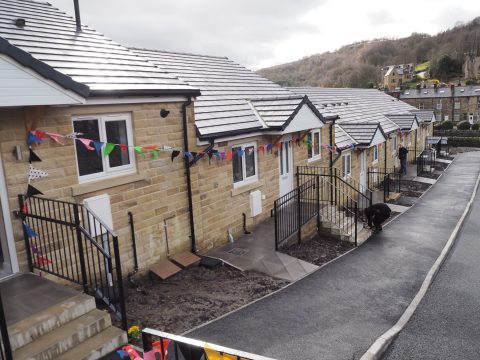Community led housing has a key part to play in the country’s post-lockdown economic recovery. A blog authored by the Co-Chief Executive of the National CLT Network, Catherine Harrington.
This week, our Chair Baroness Cathy Bakewell MBE wrote to the Minister for Housing, the Rt Hon Christopher Pincher MP, setting out how we can support the Government’s plans for recovery and urging the Community Housing Fund be renewed.
Read the full letter here. It builds on what I wrote here a few weeks ago.
But it’s not just about how we can help the economy to bounce back. It’s about how the sector needs to be a bigger part of the future landscape for housing. There is a general consensus that we owe it to ourselves and future generations to ‘build back better’. In a recent speech, the Prime Minister set out that “though the UK will be changed by this experience, I believe we can be stronger and better than ever before. More resilient, more innovative, more economically dynamic, but also more generous and more sharing” (emphasis added).
What struck me is that community led housing is all of these things.
Community led housing is resilient. Community led housing puts community assets in community hands, allowing them to adapt and quickly respond to changing needs, like mobilising aid in times of crisis and taking care of their own. Homebaked CLT in Liverpool operates a cooperative bakery near Anfield Stadium. As soon as the bakery was closed to the public due to lockdown the Homebaked team and its local suppliers ramped up the production of bread and pies for food banks and hospitals in the city. The Norton-sub-Hamdon CLT in Somerset owns and operates a small shop which has become a pillar of the community during lockdown, delivering essential food and supplies to self-isolating households and neighbouring villages.

Community led housing is innovative. In fact, it is the essence of innovation. Many groups are formed because the housing market isn’t working and the mainstream isn’t meeting the needs of their community. They have innovated to come up with new tenures to meet that need, or are wanting to build to the highest environmental standards or use the latest building technologies.
London CLT’s newest project in Lewisham, as with their St Clement’s project, will sell flats at a price linked to median income, so you never pay more than a ⅓ of your income on housing costs. The Bunker Housing Co-operative built homes in Brighton for low-income families spending a large proportion of their incomes on rent. Built on a derelict infill site, the families used a self-build modular system and an eco-friendly Cross Laminated Timber structure and completed construction in June 2020.

Community led housing is economically dynamic and it is that dynamism that means that it has a key role in supporting economic recovery. The Community Housing Fund has grown the pipeline to 23,000 homes, over 10,000 of which are ready to be built with a CHF extension. Many groups are willing to build on sites others wouldn’t even consider, often because of the planning risk. Calder Valley CLT made use of a difficult site – a narrow and sloping parcel of land – gifted by Calderdale Council to build six independent-living bungalows for older community members. Community housing projects are also a vital source of contracts for small and medium-sized builders, thereby keeping them in business and stimulating local economies. Most importantly, community led housing creates permanently affordable housing options in communities so that people who are tied to the area through work and loved ones can afford to actually live there.

And last but not least, community led housing is generous and based around sharing. Generosity and sharing are at the heart of community housing. The very fact that members of a CLT are willing to put in hundreds of volunteer hours to build genuinely affordable homes that will remain affordable for local people is the epitome of generosity. And so many groups have been centres of their communities during the pandemic.
Moreover, essential workers have put everything on the table to take care of our communities during this crisis. We must be generous in building back a better housing system that makes permanent affordable housing for those that need it. And community housing is doing that.
Yorspace’s first project, Lowfield Green Housing Cooperative is planning innovative and eco-friendly homes which will allow 19 priced-out households, including shop assistants and healthcare workers, to find affordable housing without moving out of York.
As the Coronavirus crisis made clear, the housing situations of many families across the country were more isolating then we knew. However, the experience of many living in community led housing projects could not have been more different. Many community led housing developments are designed with community and communal living at their core, especially cohousing. They benefit from shared spaces and intergenerational activities among neighbours which limit isolation and loneliness. The Low Impact Living Affordable Community (LILAC) in Leeds built its community around communal meals and events, but during the lockdown, its residents found a plan to take care of everyone while maintaining social distancing.

Community led housing has a key role to play in rebuilding the economy. It is all the things the Prime Minister spoke about – it is resilient, innovative, economically dynamic, generous and sharing. However, to make that contribution it is essential that the Community Housing Fund (CHF) is renewed in the forthcoming Comprehensive Spending Review. We’ll be making that case over the coming months and hope you will join us in doing so.
